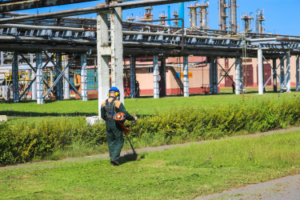Facilities management involves the maintenance and administration of various company facilities, such as blocks of flats, offices and mechanical or electrical utilities, as well as any physical resources owned by a company that may pose a potential risk to their staff.
At Dependable, we offer a wide range of Facilities Management (FM) services – both hard and soft.
What’s the difference between Hard and Soft Facilities Management?
Hard FM services are the ones that are legally required for every business and the safety of employees, tenants and visitors. They tend to be linked to the physical building. Soft FM services are all about enhancing the functionality of your property and making it more aesthetically pleasing.
For both your Hard and Soft FM, maintaining standards is key. Whether the maintenance of your premises is proactive or reactive, if it isn’t managed effectively, it is likely to increase your costs down the line.
If you entrust your maintenance programme to Dependable, you can depend on us to ensure that your maintenance is kept up to date.
The four types of Facilities Maintenance
There are four different types of facilities management, corrective, preventative, risk-based and condition-based. Depending on your requirements and way of approaching asset management, these maintenance types can help to increase the longevity of different aspects of your facilities.
1. Corrective Maintenance
This is where maintenance is carried out when a problem or deficiency has been identified. The maintenance carried out will aim to restore the items to their normal operating conditions.
This approach can mean that ongoing monitoring costs are reduced, however, the costs for emergency repairs if and when needed can be significantly higher than for an ongoing maintenance plan. Disruption is often greater when there is an unexpected fault or failure. In addition, in certain circumstances, there can be serious safety risks to this approach.
2. Preventative Maintenance
When maintenance is carried out against a planned programme, with predetermined intervals or according to prescribed criteria, such as for fire extinguishers, this is referred to as preventative maintenance.
This type of maintenance programme can lessen the risk of failure risk and therefore limits the reduction in performance of equipment. Maintenance cycles are also planned to try to keep disruption to a minimum, taking the device out of service for the least amount of time possible.
Preventative maintenance should reduce the incidence of unplanned operating faults and as it is carried out under a pre-agreed schedule, the cost of the plan is regular, too, assisting cash flow.
3. Risk-based Maintenance
Similar in some respects to Preventative Maintenance, Risk-based Maintenance considers the likelihood that an item will fail. Analysis is taken from regular tests of devices, measuring usage and productivity etc and a decision is then taken as to the likely risk of the device failing.
The information gathered is assessed against the environmental, operation and condition of the equipment being maintained. The appropriate maintenance programme will be decided once the asset’s condition and the risk factor of failure have been assessed.
All equipment showing abnormal values can be refurbished or replaced, with your agreement. By utilising a Risk-based Maintenance plan, it is possible to extend the useful life of assets and over time achieve high levels of reliability, safety and efficiency for them.
4. Condition-based Maintenance
This style of maintenance routine is based on monitoring all equipment’s performance. Should the equipment not be performing to the levels required, or as expected, corrective action can be taken as a result.
Depending on the type of equipment, device or asset, it may be possible for remote, on-line detection of the condition of the item. Alternatively, a manual inspection can be scheduled. Maintenance will be carried out when certain indicators suggest that the equipment is deteriorating and the likelihood of failure is increasing.
By utilising this type of strategy, over the long term, it can reduce the costs associated with maintenance and also minimises the occurrence of serious faults. This, in turn, will optimise the available resources and ensure all assets are maximised.
Which is the best type of maintenance?
There isn’t one ‘right’ answer, and it might be that you choose to blend the types of maintenance so that your maintenance company delivers the best solution for you.
How Dependable can help
At Dependable, we offer a wide range of property services that will make sure your property is well looked after for years to come. We will discuss with you the facilities maintenance strategy that is the most efficient, cost-effective and safe for your circumstances. We will agree on a comprehensive strategy for both your Soft and Hard Facilities Management.
Contact us today to find out more about our different offerings, and discuss how we can meet your requirements to ensure your property is well looked after.




